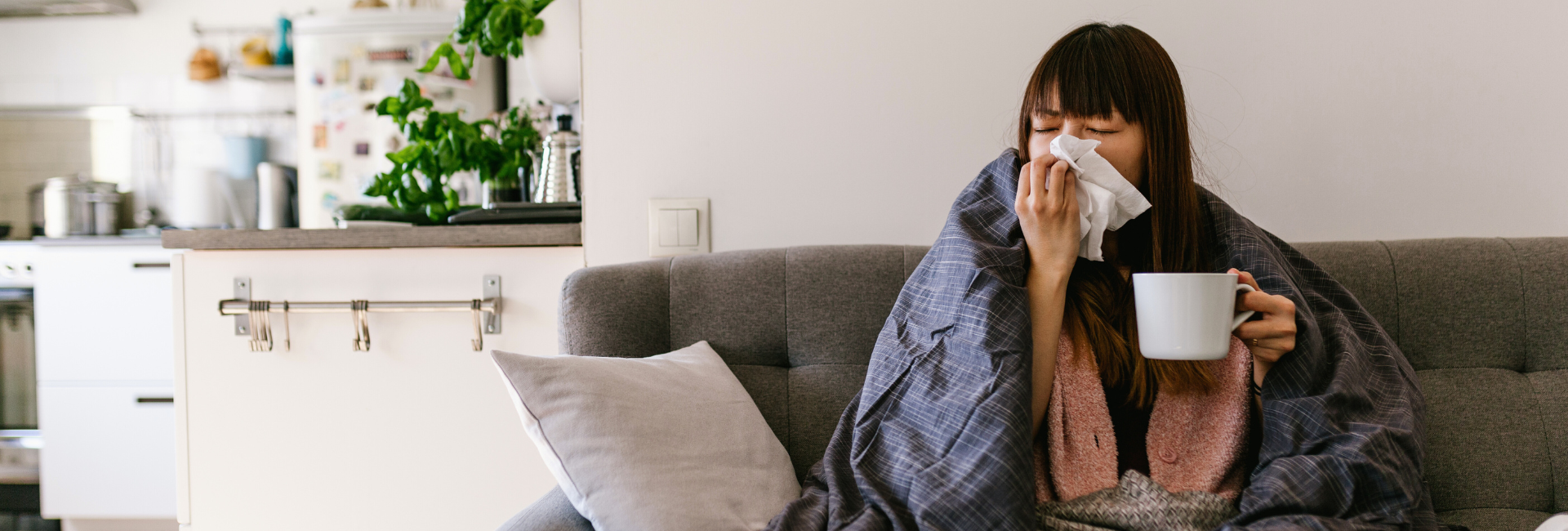Managing Diabetes When You Are Sick
 This is a general guide for individuals with Type 2 Diabetes. Please consult your healthcare team for specific instructions tailored to your condition.
This is a general guide for individuals with Type 2 Diabetes. Please consult your healthcare team for specific instructions tailored to your condition.
If you have Type 1 Diabetes, this guide does not apply to you. Please consult your healthcare team for an individualised sick day plan.
What happens when you are sick
During illnesses such as the flu or food poisoning, blood sugar levels can rise due to the stress of illness.
If you do not drink enough water, you may become dehydrated, which can cause blood sugar levels to increase further.
On the other hand, illness may lead to a poor appetite, which can cause your blood sugar levels to drop, potentially resulting in low blood sugar (hypoglycaemia).
It is important to understand how to manage your condition when you are sick to prevent both high and low blood sugar levels.
What to do when you are sick
- Check blood sugar levels more frequently
- Check your blood glucose level every 4 hours.
- Set a timer to remind yourself to check your blood glucose level.
- Stay hydrated
- Drink plenty of water (if you are not on fluid restriction instructions from your doctor).
- Sip at least half a cup of water or sugar-free fluid every hour.
- Take regular meals
As much as possible, try to take your meals as usual. This is especially important if you are on insulin, sulphonylureas. or glinides, as taking these medications without food can cause low blood sugar.
Here are some suggestions of easy-to-digest foods to help maintain your blood sugar levels between 4 to 10 mmol/L:
- 1 bowl of rice porridge
- 1 bowl of oatmeal porridge
- 1 bowl of macaroni soup
- 6 pieces of plain crackers, with 1 cup of milk
- 2 slices of bread with soup, with 1 cup of milk
- 1 cup of mashed potatoes
- 1 serving of oral nutritional supplements formulated for diabetes
- 100ml fruit juice
- 200ml milk
- 1 scoop plain vanilla ice-cream
- 150g of low-fat yogurt
- Oral nutritional supplements formulated for diabetes
If you are unable to eat, and your blood glucose is between 4 and 10 mmol/L, take any of the following every one to two hours to maintain your blood glucose levels:
- 125ml of fruit juice
- 1 tablespoon of honey
- 1 cup of milk
- 1 small tub of plain yoghurt
- 1 cup of cream soup
- Half cup of ice-cream
If your blood glucose falls below 4 mmol/L, you are experiencing low blood sugar (hypoglycaemia).
- Advice on diabetes medication
- Continue taking your insulin injections.
- Continue taking your diabetes tablets, except if you are vomiting, experiencing diarrhoea, eating or drinking very poorly. If you experience the symptoms mentioned, stop the intake of SGLT-2 inhibitors (dapagliflozin, empagliflozin, canaglifozin).
- If your appetite is poor, consult your healthcare provider about adjusting the dose of your diabetes medication.
When to seek medical attention
Seek medical attention early if you experience of the following symptoms:
- Fever of more than 37.5⁰C for two days
- Recurrent low blood glucose (less than 4 mmol/L)
- Persistently high blood glucose (more than 15 mmol/L)
- Persistent vomiting and inability to take in food
- Persistent abdominal pain
- Persistent diarrhoea
If any of the following severe symptoms develop, seek help at the emergency department immediately:
- Chest pain
- Feeling of breathlessness
- Fruity-smelling breath
- Severe abdominal pain
- Drowsiness, confusion, or unconsciousness
Back to 'Dealing with Diabetes in Special Situations'
 This is a general guide for individuals with Type 2 Diabetes. Please consult your healthcare team for specific instructions tailored to your condition.
This is a general guide for individuals with Type 2 Diabetes. Please consult your healthcare team for specific instructions tailored to your condition.















